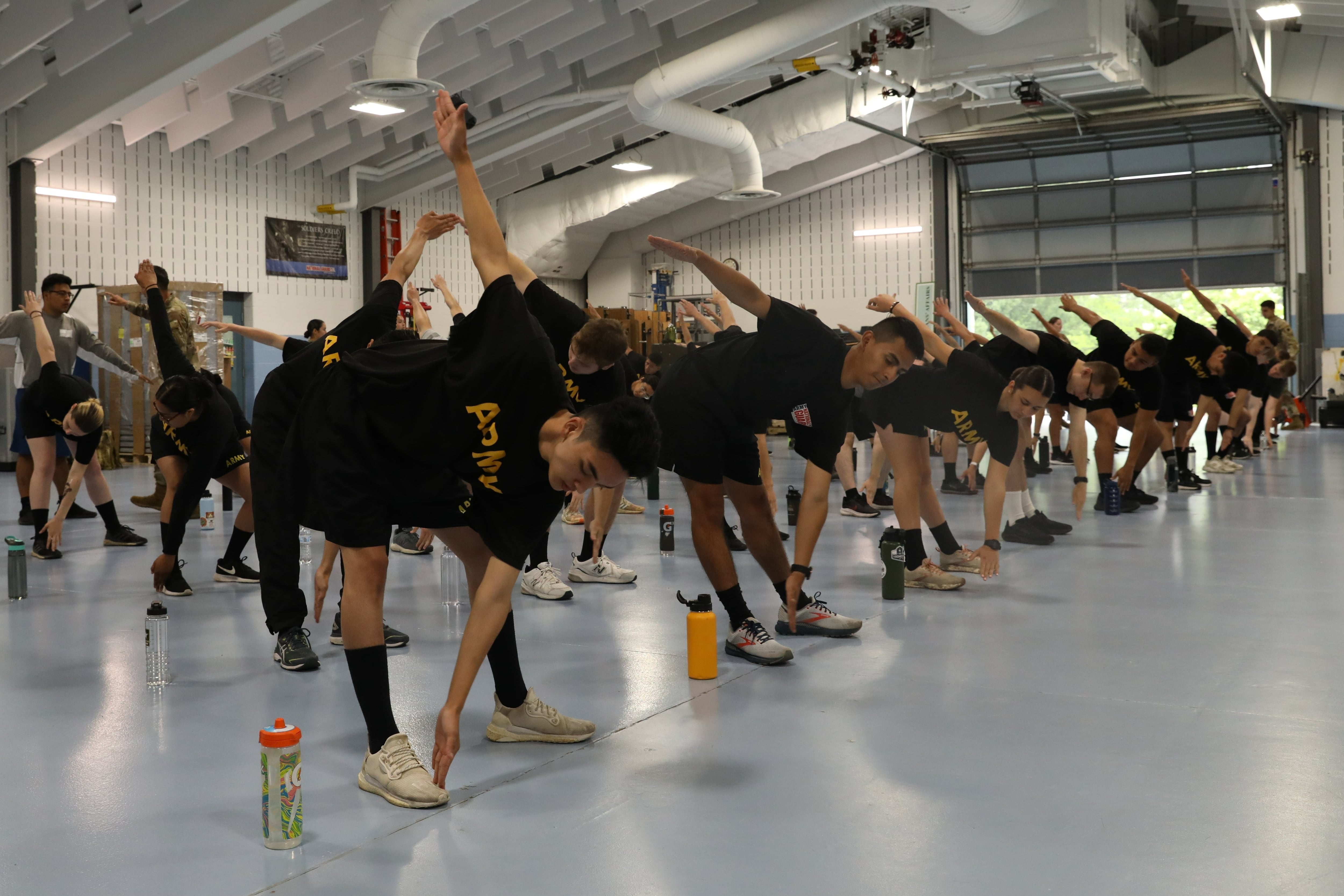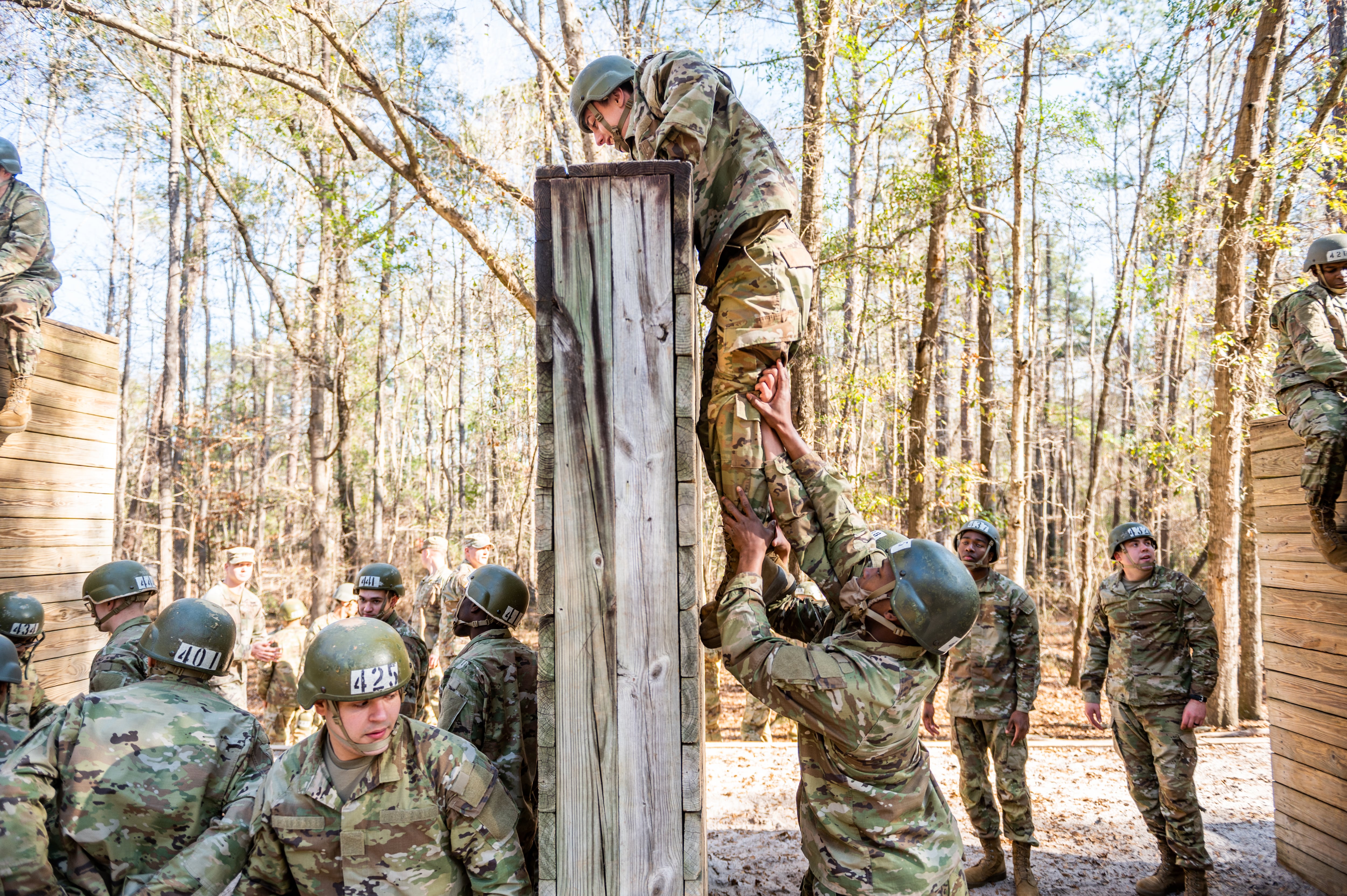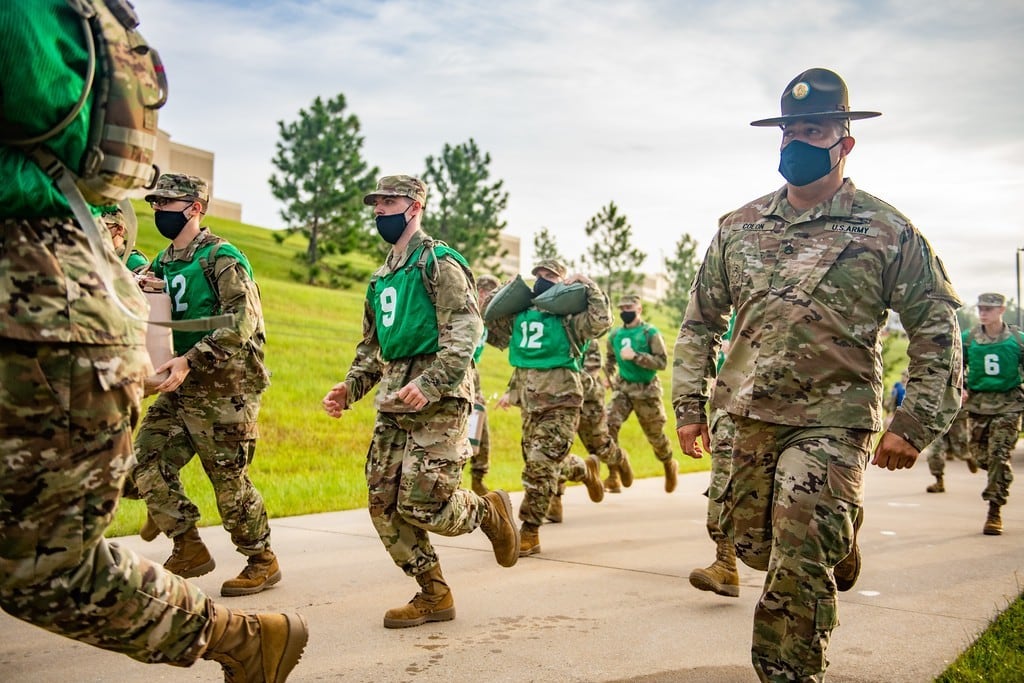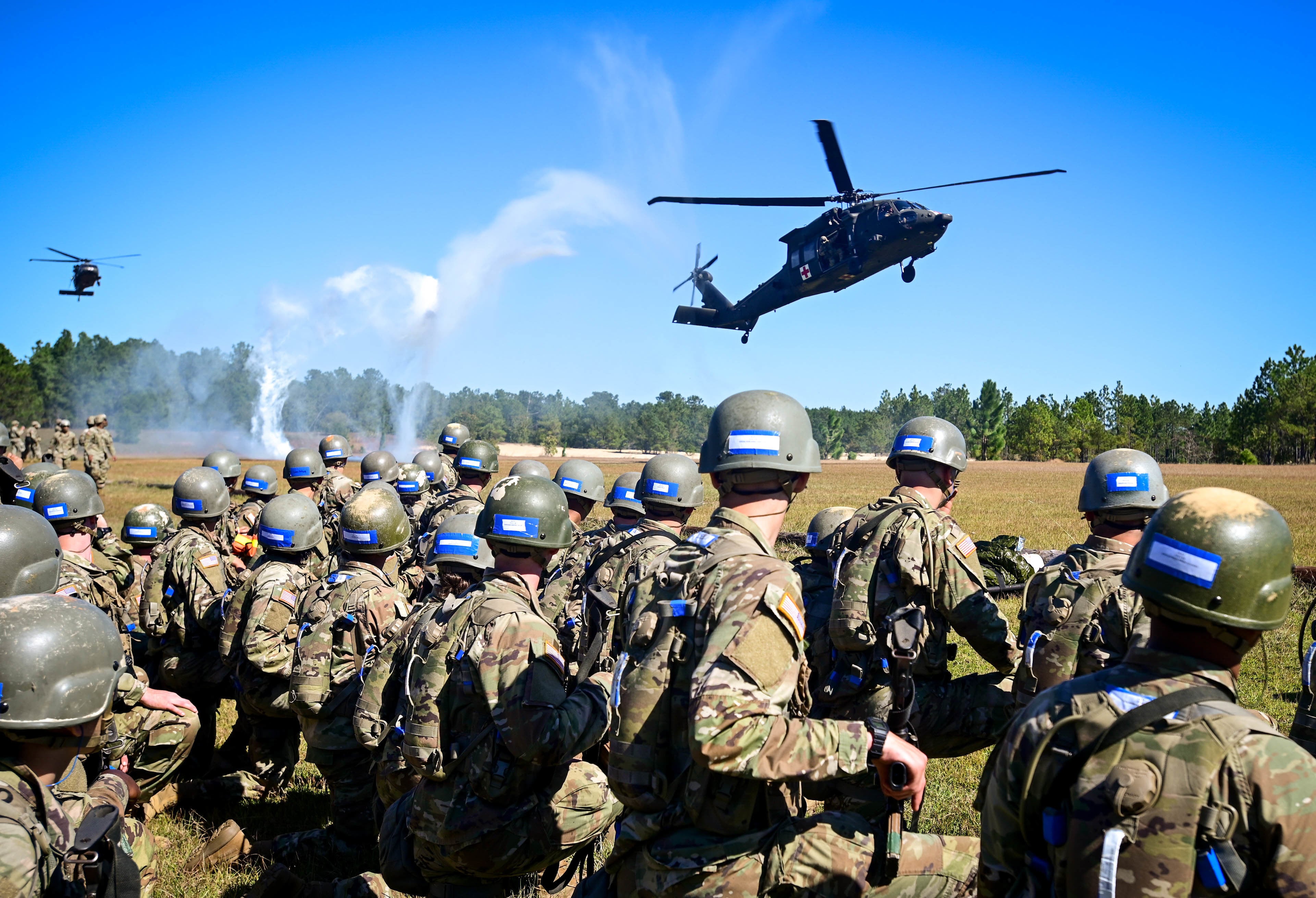Defense Department officials have been sounding the alarm for months: the military is going to miss its enlisted recruiting goals this year, and the Army may be in the worst spot of any of the services.
As of late June, according to an Army spokesperson, the Army had only hit 40% of its recruiting goal of 55,400 new soldiers for fiscal year 2022. The reasons contributing to plunging recruitment are complex, including more detailed medical screenings, a shrinking proportion of Americans eligible to serve, poor marketing practices, low civilian unemployment and more. In the face of the challenge, the service is pulling out nearly all the stops to ensure the ranks are filled.
According to Army releases, sources familiar with planning and documents obtained by Army Times, the service has:
- Slashed its end strength target by 12,000 troops and its recruiting goal by about 15,000.
- Relaxed its tattoo policies.
- Offered — then rescinded — enlistment to otherwise qualified applicants without high school education.
- Temporarily extended retention control points for enlisted troops of all ranks.
- Dramatically ramped up recruiting bonuses and introduced new contract options.
- Involuntarily extended 267 recruiters who were scheduled to return to the force and called 100 more former recruiters back to USAREC.
- Called nearly 250 new ROTC lieutenants to active duty months ahead of schedule. The officers are currently training at Fort Knox, Kentucky, before going to assist recruiting units.
- Alerted 2022 ROTC active duty-selected lieutenants whose training was scheduled to begin in fiscal 2023 that they will report to active duty on Sept. 1, totaling around 600 troops.
- Mobilized Army Reserve doctors in an effort to dig out of the waiver backlog caused by DoD’s new medical records screening system, MHS Genesis.
- Planned to establish a special training camp for applicants with low scores on qualifying exams and those who exceed body fat standards beyond the usual waiver threshold. The service is weighing a special task force at Fort Jackson to train them to the entry standard before they can go to basic.
Many of these moves have historical precedents dating to when the Army expanded for the wars in Iraq and Afghanistan.
But 2022 is different, experts say — will these efforts be enough for the Army to meet its end strength target for fiscal 2022 and beyond? Likely not, argued retired Army Lt. Gen. Tom Spoehr, who works for the conservative-leaning Heritage Foundation think tank.
“This is the year we miss [end strength] by tens of thousands,” said Spoehr in a phone interview.
To meet its end strength goals, the Army, which has accessed only about 22,000 recruits over the past nine months, will need to recruit somewhere between 27,000 and 33,000 new soldiers in less than 11 weeks.
Spoehr is skeptical they can do it.
“[Fiscal] 2022, they’re not going to make their goals. [Fiscal] 2023, everybody says it’s going to be worse,” Spoehr said. “They’re going to turn the corner into 2023 with nobody in the delayed entry program.”
According to a 2019 RAND report, the service prefers to enter new fiscal years with a healthy delayed entry pool of 15,000 to 20,000 signees awaiting basic training. That number was less than 6,500 in October 2021, according to budget documents.

Dr. Beth Asch, a senior economist and manpower analyst at Rand Corp., said in an interview that she “doesn’t know how much they’re going to miss” end strength by, though she hopes the service can make it up.
“I think there’s some soul-searching that has to go on about how to maintain the quality of the force [and] the effectiveness of the force in this [recruiting] environment,” said Asch.
Army Secretary Christine Wormuth recognized the enormity of the “challenging recruiting environment” in a statement sent to Army Times for this story.
“This is not a one-year challenge,” said the service’s top civilian. “And because it’s not a one-year problem we will solve overnight, we are examining a wide range of additional steps we could take in the short and longer term to recruit more soldiers into the Army without lowering standards or sacrificing quality.”
Why the Army can’t recruit — a perfect storm
The service’s recruiting woes likely come from the intersection of several long-term trends and recent policy and medical screening changes.
Part of the problem is that fewer Americans today meet the medical or moral standards to enlist. Only about 23% of young Americans qualify, Army Chief of Staff Gen. James McConville told Congress in May. DoD market research from summer 2021 indicates that the percentage who are willing to serve is slipping as well, reaching lows not seen since the grinding surge years of the wars in Iraq and Afghanistan.
Asch cautioned that the qualification numbers also include those who may be able to receive waivers.
The DoD market survey also pointed towards another factor: the economy, while beset by inflation, has historically-low unemployment. Survey respondents reported record-high confidence in their ability to secure full-time civilian employment.
Economists, including Asch, have studied the link between unemployment and recruiting. When jobs are scarce, more high quality recruits join; when jobs are plenty, talent is difficult to find.
And when real military compensation goes down — such as when inflation outpaces pay raises and increases to housing or subsistence allowances — recruiting becomes more difficult as well, Asch said.
Several conservative commentators have also pointed towards DoD’s COVID-19 vaccine mandate as a potential factor harming recruiting, and data shows they may have a point.
According to Center for Disease Control data, 36% of Americans aged 18-24 and 32.7% of those aged 25-39 are not fully vaccinated, meaning that they are ineligible to join.
Spoehr pointed at the vaccine mandate as “another subtraction from the qualified pool of people” and as one of several policy decisions that he argues “dragged [the military] into the political sphere.” That has potentially alienated some conservative Americans.
Asch noted that it’s not yet clear what proportion of unvaccinated young Americans would otherwise be willing to join the military — or are even eligible to do so — and suggested that the issue requires further study.
The Army’s top civilian, Wormuth, concurred with much of Spoehr and Asch’s analysis of the recruiting environment in her statement to Army Times, though she didn’t directly mention the vaccine mandate.
“Low unemployment rates, intense competition with the private sector, smaller numbers of Americans who are fit enough to serve, and challenges resulting from the pandemic have all made recruiting more difficult,” admitted Wormuth.

Army officials also believe that the COVID-19 pandemic may have impacted the recruiting pool in other ways, too.
“We know the COVID-19 pandemic has had negative impacts on many young Americans’ academic and physical fitness opportunities, exacerbating an existing problem that less than 25% of the nation’s youth meet Army standards,” said Army spokesperson Col. Cathy Wilkinson in an emailed statement.
But neither Wormuth nor Wilkinson’s statements addressed another cause of the recruiting squeeze. In March, the DoD launched MHS Genesis, an electronic medical records system that can access applicants’ medical history from most U.S. civilian medical providers and the entire military medical system. A similar program, the Medical Review of Authoritative Data, launched in late 2021.
Before these new screenings, applicants were required to self-report their medical history and recruiters were expected to help gather records validating those histories. But recruiters had an informal practice of coaching recruits to selectively omit parts of their medical history.
The new screenings have eliminated that practice — so applicants have to tell the truth and be prepared to request medical waivers for anything that appears in their records, such as once-filled antidepressant prescriptions, never-used inhalers or other potentially-disqualifying conditions or medicines.
A June 1 memo sent by Army Training and Doctrine Command’s leader, Gen. Paul Funk, to Army Secretary Wormuth requesting more resources for recruiting, explains how the new screenings overwhelmed the waiver processing system. One of the requests was for money to activate Army Reserve doctors to assist with the waiver backlog.
“The under-resourced roll out of [MHS Genesis] generated significant processing backlogs. [Army Recruiting Command] does not have sufficient physician waiver assistants on staff to mitigate the shortfall,” said Funk. “TRADOC internally tasked medical providers to assist in the short term, but cannot sustain without structure change.”
These factors didn’t appear overnight. The service had some challenges in fiscal 2020 and fiscal 2021 recruiting amid the pandemic, but managed to meet end strength in both years.
First signs of trouble
This year, the warning signs appeared early.
TRADOC’s senior enlisted leader, Command Sgt. Maj. Daniel Hendrex, told Army Times in a phone interview that “about six months ago…we started seeing a shift in [recruiting] numbers.”
Officials in the service’s recruiting command, USAREC, may have been worried even earlier due to how shallow their delayed entry pool — applicants who have signed contracts but are waiting to ship to training — was at the beginning of this latest fiscal year. According to a 2019 RAND report, the service usually wants to maintain a delayed entry pool totaling 35% of its accessions goal for the year.
According to budget documents, though, the Army only had 6,462 in its delayed entry pool in October 2021, or only around 9.1% of its original goal of 70,500 accessions. That’s a lower percentage than nearly any other point in the post-9/11 era, according to the RAND report.
A rebalancing of mid-career NCOs meant to ensure that line units have enough staff sergeants to serve as squad leaders left USAREC with 1,000 fewer Army-selected recruiters, as well. At the time, USAREC leaders were confident that their “mission modernization” initiative could transform Army recruiting to do more with fewer people and resources.
Then the increased prescription medicine screenings — the Medical Review of Authoritative Data, or MROAD — came online in December, giving entry processing station doctors the ability to see applicants’ civilian prescription histories.
A senior recruiter speaking with Army Times in February called the prescription history reviews a “disaster.” The reviews flagged recruits, forcing hopeful soldiers to seek time-consuming medical waivers. Waiting for those waivers can lead an applicant “to get cold feet.”
“Everything that comes up in MROAD SHOULD be disclosed...anyway,” said the recruiter in a text message. But he, and many other long-time recruiters, were frustrated that the system was catching “all the insignificant shit” and some doctors at MEPS require documentation or a waiver for every medication the reviews found.

By January, senior leaders realized that the recruiting mission was facing difficult headwinds, TRADOC’s Hendrix said. That’s when the service started increasing recruitment bonuses across the board, up to $50,000 for some careers.
The next month, the service’s recruiting command announced it was expanding short-term and flexible contract options, moves that it takes periodically when the recruiting pool is lean.
Then MHS Genesis came online in March, giving medical screeners access to pull applicants’ medical histories from most of the nation’s civilian electronic medical systems.
Hendrex, the TRADOC CSM, explained that the command wasn’t prepared for the amount of additional administrative work that MHS Genesis would require.
He said that to address the medical waiver backlog it rapidly generated, TRADOC had to shuffle nearly 90 personnel — medical providers, administrative assistants and medics — over to USAREC just to keep up.
Hendrex emphasized that the Army “absolutely wanted” Genesis in place, but “that was just poor timing coming out of COVID into the [recruiting environment that we were in.”
By April, when the Army submitted its fiscal 2023 budget request to Congress, the alarm bells were ringing.
The service requested to cut its current year end strength target by 12,000 — previously 485,000 — down to 473,000. The Army also slashed its accessions target by 15,000 new soldiers, from 70,500 to 55,400.
‘We did not want to have to lower our recruiting standards’
When senior Army leaders testified to Congress about the request, they were clear: they could not recruit enough qualified people to fill the ranks.
“We are modestly reducing our end strength, and we’re doing this because we want to preserve a high quality force,” explained Army Secretary Wormuth to lawmakers in May. “We did not want to have to lower our recruiting standards as we face a challenging recruiting environment.”
Wormuth assured Congress that the Army was “looking at what we can do immediately this summer to help ourselves and the kinds of changes to our recruiting enterprise that we may need to make to help ourselves over the next couple of years.”
Two weeks later, on June 1, TRADOC’s commanding general, Funk, had a memo on Wormuth’s desk with a series of immediate initiatives for her approval. Army Times obtained a copy of the decision memo, which also circulated on social media.
Funk wanted involuntary assignment extensions (and extra pay) for top-performing recruiters who were scheduled to leave before the end of the year. Funk also sought an influx of 100 former recruiters on temporary duty, nearly 250 new lieutenants who hadn’t started active duty yet to help recruit and money to activate Army Reserve medical providers for the waiver backlog. He also asked for an additional $25 million in marketing funds for advertising, claiming that the funds would lead to “2,500 contracts” this fiscal year.
Wormuth granted those wishes. In her statement to Army Times, she said “we started taking steps months ago to adjust to these headwinds, such as letting new recruits choose their first duty station and offering financial incentives to go to basic training earlier.”
The Army also quickly started taking other steps that could ease accessions or bolster retention — without “lowering standards.”
Sergeant Major of the Army Michael Grinston made a series of tweets June 8 telling leaders across the force that 6,000 troops were scheduled to leave the Army between then and Oct. 1, and said he “expect[s] more leader engagement on this topic across the force.”

Grinston’s tweet is notable because the Army has already exceeded its retention goal for fiscal 2022. As of July 7, according to Army spokesperson Wilkinson, the service has secured 57,738 active duty reenlistments against a goal of 55,900. But if fewer soldiers are entering the Army, more need to stay to meet end strength.
The service also eased its tattoo policies, telling reporters the move was related to reducing waivers for recruits enlisting with tattoos. It also temporarily extended retention control points across all ranks, which are time limits that require involuntary discharges for enlisted troops who don’t get promoted quickly enough.
Army Times obtained an email from Cadet Command’s top general, Maj. Gen. Johnny Davis, informing his command that more than 600 new lieutenants who were scheduled to come onto active duty in fiscal 2023 will instead report for duty on Sept. 1 of this year. They don’t yet have an assigned mission, either, according to Davis’ email — but they will be counted in the fiscal 2022 end strength.
But at least one policy was implemented and quickly rescinded — partially due to the perception that it lowered recruiting standards.
Last month, the Army temporarily waived its requirement that new troops have a high school diploma or GED. But there was a catch. Those who signed up under the option had to score better than half of other Americans on their aptitude tests, not require other enlistment waivers and were ineligible for any of the service’s bonuses. They’d also have to finish a GED in order to reenlist.
Many conservative commentators slammed the move, pointing at the vaccine mandate. They argued that the military’s insistence on requiring the vaccine for new recruits had forced it to lower other standards.
Less than a week later, the Army ditched the waivers without any explanation, leaving many applicants without education out in the cold. An Army official speaking to Army Times on background said the waivers may someday come back, but that’s not guaranteed.
Other proposed solutions
More plans to address the looming end strength shortfall, which experts say is likely to continue into fiscal 2023 absent major action, are on the table as well.
According to officials at Fort Sill, Oklahoma, who spoke in a Thursday town hall, and sources familiar with the service’s planning, the Army is on the verge of establishing a special training task force at Fort Jackson, South Carolina. The task force would train new recruits who joined with body fat measurements beyond what the service typically allows for enlistment. It’s not clear how much additional body fat the plan would allow applicants to join with, though.
Col. Michael Stewart, who commands a training brigade at Sill, said TRADOC has diverted 500 basic trainees to his installation so Fort Jackson would have the capacity to take the body fat waiver troops “and try to get them into Army standards so that they could begin basic training.”
According to a source familiar with planning, 1st Battalion, 61st Infantry Regiment, is the Fort Jackson unit prepared to lead the proposed body fat preparatory camp, which would take place before the recruits transition to basic training.
Hendrex, the TRADOC CSM, visited the unit Thursday, according to its Facebook page.
Wilkinson, the Army spokesperson, did not directly address the body fat preparatory camp in her statement.
“The U.S. Army is considering a variety of options to increase the opportunities for people to serve while maintaining the quality needed across the force,” she said. “Options under development are pre-decisional at this point and are focused on the next few years.”
Both think tank experts, Asch and Spoehr, praised the service for looking into different ways to address the fact that a growing proportion of young Americans are too fat to enlist.

Spoehr, the retired general, said he “love[s] the idea.” But he would prefer to see it executed at local recruiting shops while paying the recruits a small stipend, rather than shipping all recruits to a training site and placed on the government payroll full-time before they lost enough weight to begin basic training.
“There’s potentially some merit there because sometimes somebody needs a fire under their feet and a structured program to help them,” said Asch, RAND’s senior economist. “These people are young, so their habits are more malleable, and this is an opportunity to change their lifestyle and do something positive for their career — and help the Army, too.”
Another option reportedly on the table is establishing a similar program at Fort Jackson intended to help lower-aptitude applicants study to improve their test scores before beginning training. DoD guidance assigns applicants to aptitude categories based on their Armed Forces Qualification Test scores, with Category IV being the lowest for those who score in the lowest 30% of Americans on the test.
In each annual recruiting cohort — the total recruits who join the Army in a given year — up to 4% can have Category IV aptitude scores.
A source familiar with planning confirmed the Army is exploring how to tap into higher-potential Category IV applicants. One proposal would send them to Fort Jackson for a special training task force that would provide AFQT tutoring.
The idea behind the tutoring, the source said, is that applicants would be able to focus better in a military learning environment than if they were left to study at home and alone. Military life would also offer financial and housing stability that some applicants may not have at home.
It’s not clear, though, whether the service will go through with the idea.
A source familiar with planning discussions said the proposed program was put on hold because of concerns that an AFQT tutoring task force may not be in the best interests of the applicants themselves. It’s uncertain how discharges from such a program would work, and it’s not clear whether the task force would better serve applicants with Category IV scores.
Asch also expressed concern over the Category IV study camp proposal.
“I am a little bit more skeptical,” she said. “Why are these people testing at [Category IV]?”
She said that those who struggle with English proficiency could likely rapidly improve their scores, but native English speakers of potentially higher cognitive ability whose scores “reflect poor quality education…that’s a hard thing to make up in a camp…I’d like to see what the evidence is on that.”
“It’s one thing if they’re thinking about this as a pilot test…where it can be assessed from a research standpoint,” she added.”But to solve the recruiting problem in the next few months? This maybe doesn’t make sense.”
Solving the problem for good
In addition to the proposed training programs, a number of formal reviews of Army and DoD accession practices and standards are underway.
Wormuth told NBC News that the service has a “tiger team” meeting every other week that’s focused on reviewing Army accessions, recruiting and marketing from top to bottom — including policy, organizational structure and long-standing practices.
There is also an ongoing DoD-level medical accessions policy review intended to evaluate whether certain standards need adjustment in light of “changes in society [and] more access to medical records,” according to a senior Army civilian who spoke with reporters during a media event last month.
“[The Pentagon] is running a couple pilots on certain medical conditions [for which] the services typically offer waivers to see if they can shorten that timeline for review, especially given that [the new medical screenings] can see back through history to any medical record in the applicant’s file,” said Lin St. Clair, who oversees accessions as an assistant deputy Army secretary.
And one of the initiatives to emerge from the “Solution Summit,” a recent gathering of the Army’s top NCOs led by SMA Grinston, was a monthly working group of top NCOs across the service that is focused on improving recruiting and accessions practices.
According to Hendrex, TRADOC’s top NCO who will also chair this working group, it’s looking at more than just policy. Another goal is for the group to streamline coordination between USAREC and units throughout the country.
Hendrex thinks that coordination is important in helping get a more authentic version of the Army’s story in front of prospective troops rather than slick-seeming recruiters.
“People see a recruiter and they think, ‘Oh, he’s here to sell me something,’” said Hendrex. “What has actually had a huge payoff is where a senior leader…take[s] three or four soldiers and you go to a high school, not to try to recruit anybody…[but] let folks get to know their Army.”
Asch thinks it will take more than just telling the Army’s story to fix the recruiting crisis, though.
“How is recruiting going to be successful in the future?” she asked. “Do we need to rethink the entry requirements? They’ve worked really well; we’ve had a really high quality force…but maybe it’s time to think about that.”
Davis Winkie covers the Army for Military Times. He studied history at Vanderbilt and UNC-Chapel Hill, and served five years in the Army Guard. His investigations earned the Society of Professional Journalists' 2023 Sunshine Award and consecutive Military Reporters and Editors honors, among others. Davis was also a 2022 Livingston Awards finalist.




